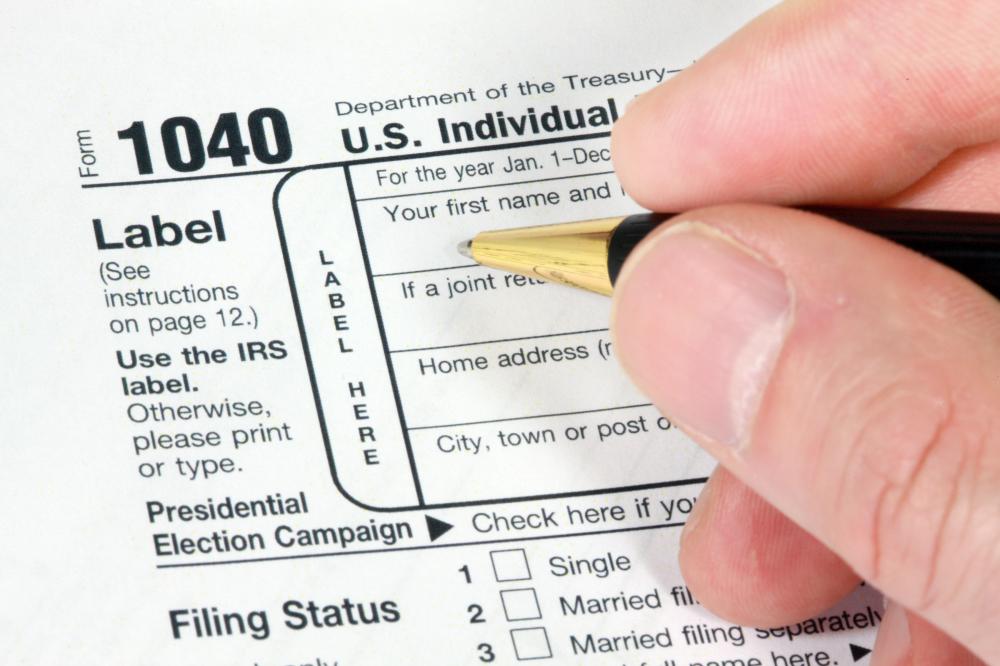At WiseGEEK, we're committed to delivering accurate, trustworthy information. Our expert-authored content is rigorously fact-checked and sourced from credible authorities. Discover how we uphold the highest standards in providing you with reliable knowledge.
What is an Estimated Tax Return?
In the US, an estimated tax return is the form that is filed with the Internal Revenue Service (IRS) to calculate the tax amount owed when a tax payer's income is not subject to withholding. Generally, a taxpayer files an estimated tax return when they expect to owe less than $1,000 US Dollars (USD) after deducting your withholding amounts and tax credits. In addition, the taxpayer expect their withholding and tax credits to be the lesser of the two amounts: 90% of the tax amount on the tax returns or 100% of the tax on the previous year’s tax returns.
IRS Form 1040-ES is the form that must be completed and filed when filing an estimated tax return. The worksheets available in the form walk taxpayers through calculating the estimated tax that is owed.

Form 1040-ES is a form that is filed in addition to the Form 1040 federal tax return. The primary components or factors for estimating the tax owed is the adjusted gross income and deductions. The taxpayer will also need to pull information from specific lines on Form 1040.
If the difference between the required annual payment to avoid penalty (Line 14c from Form 1040-ES) and Line 15 of the same form is zero or less than zero, then the taxpayer is not required to make estimated tax payments. If this figure is greater than zero, then the taxpayer will have to subtract the income tax withheld and estimated to be withheld during the tax year from the total estimated tax for the tax year being filed.
If the answer is less than $1,000 USD, then the taxpayer is not required to pay an estimated tax payment. If the answer is $1,000 USD or more, then the taxpayer is required to make estimated tax payments, and will need to calculate the payments.

The estimated tax return payments are due four times during the year. The first payment is in April and the second payment is due in June. The third payment is due in September and the final payment is due in January of the following year. For example, when filing federal tax returns for 2010, then the final payment would be due in January 2011. The first payment, due in April, is for one-quarter of the amount entered on Line 16a of Form 1040-ES. This is the figure calculated when subtracting the income tax withheld and estimated to be withheld during the tax year from the required annual payment to avoid a penalty. As tax laws are subject to frequent changes and updates, taxpayers are advised to research the topic on the IRS website, or seek the advice of a certified tax preparer or accountant to avoid making potentially costly mistakes.
AS FEATURED ON:
AS FEATURED ON:












Discuss this Article
Post your comments